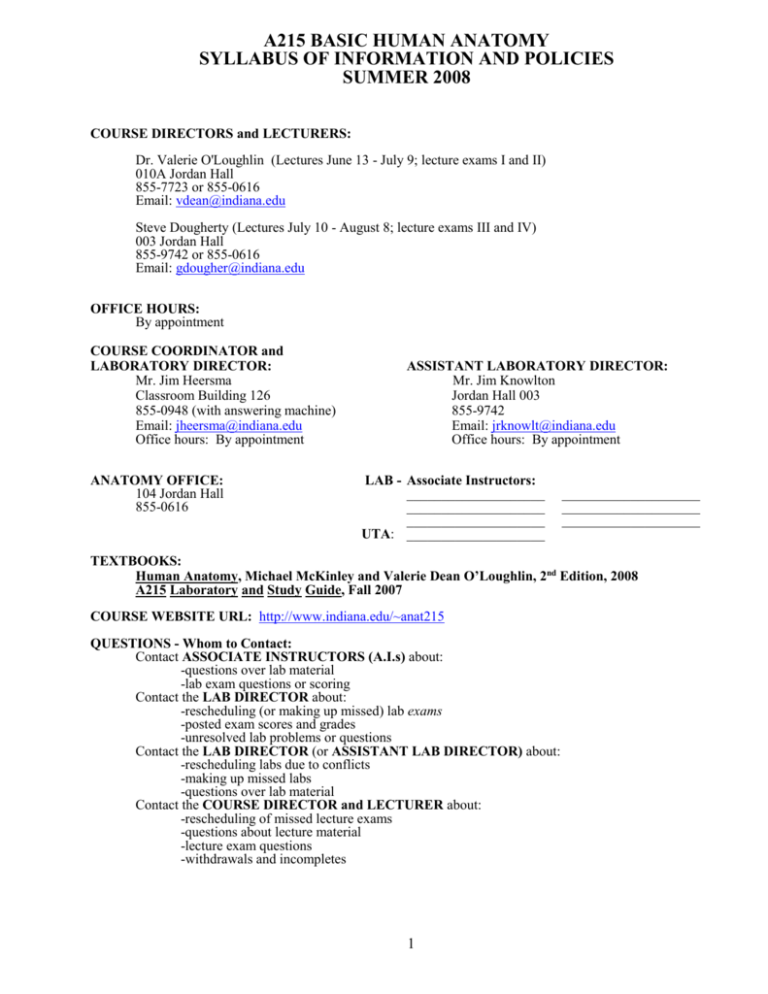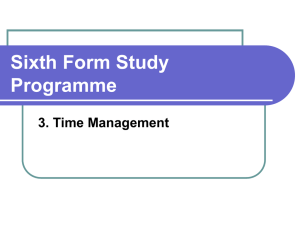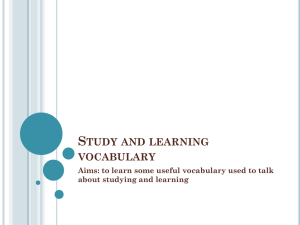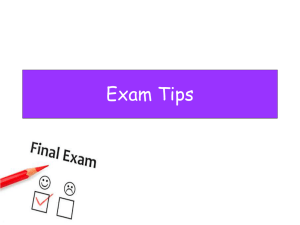Syllabus - Indiana University
advertisement

A215 BASIC HUMAN ANATOMY SYLLABUS OF INFORMATION AND POLICIES SUMMER 2008 COURSE DIRECTORS and LECTURERS: Dr. Valerie O'Loughlin (Lectures June 13 - July 9; lecture exams I and II) 010A Jordan Hall 855-7723 or 855-0616 Email: vdean@indiana.edu Steve Dougherty (Lectures July 10 - August 8; lecture exams III and IV) 003 Jordan Hall 855-9742 or 855-0616 Email: gdougher@indiana.edu OFFICE HOURS: By appointment COURSE COORDINATOR and LABORATORY DIRECTOR: Mr. Jim Heersma Classroom Building 126 855-0948 (with answering machine) Email: jheersma@indiana.edu Office hours: By appointment ANATOMY OFFICE: 104 Jordan Hall 855-0616 ASSISTANT LABORATORY DIRECTOR: Mr. Jim Knowlton Jordan Hall 003 855-9742 Email: jrknowlt@indiana.edu Office hours: By appointment LAB - Associate Instructors: ____________________ ____________________ ____________________ UTA: ____________________ ____________________ ____________________ ____________________ TEXTBOOKS: Human Anatomy, Michael McKinley and Valerie Dean O’Loughlin, 2nd Edition, 2008 A215 Laboratory and Study Guide, Fall 2007 COURSE WEBSITE URL: http://www.indiana.edu/~anat215 QUESTIONS - Whom to Contact: Contact ASSOCIATE INSTRUCTORS (A.I.s) about: -questions over lab material -lab exam questions or scoring Contact the LAB DIRECTOR about: -rescheduling (or making up missed) lab exams -posted exam scores and grades -unresolved lab problems or questions Contact the LAB DIRECTOR (or ASSISTANT LAB DIRECTOR) about: -rescheduling labs due to conflicts -making up missed labs -questions over lab material Contact the COURSE DIRECTOR and LECTURER about: -rescheduling of missed lecture exams -questions about lecture material -lecture exam questions -withdrawals and incompletes 1 COURSE DESCRIPTION: This course presents a systemic approach to the study of the human body. Lecture presentation begins with an introduction of anatomical terminology and an overview of cellular processes and tissue classification. Students then are introduced to the gross and microscopic anatomy of the following systems: integumentary, skeletal, muscular, nervous, circulatory, respiratory, digestive, urinary and reproductive. The laboratory component of the course generally parallels and reinforces lecture concepts through the use of models, histological slides, skeletal materials and cadaver demonstration. Lecture meets daily. Students also attend four 2-hour labs per week. LEARNING GOALS: As you participate in this course, you will achieve the following learning goals: Learn the names and functions of anatomical structures Learn anatomical structures and concepts that will help you succeed in your college program Understand the “big picture” of how anatomic systems work together Understand and apply the clinical relevance of anatomic structure WITHDRAWALS AND INCOMPLETES: We will adhere to University policies. Under Indiana University policies: A grade of Incomplete (I) may be given only when the work of the course is substantially completed and when the student’s work is of passing quality. (Indiana University Bulletin, College of Arts & Sciences). Any student with a grade of I on record for A215 may remove that grade ONLY by arrangement with the current course instructor; re-registration for A215 by any such student to remove an I is invalid. If your dean permits you to withdraw after the date for an automatic W (listed in the Schedule of Classes), the course director will give you a W (if your grade is D- or better) or an F (if your grade at that point is an F). EXAMS: Each lab or lecture exam will deal only with the material covered since the last exam (see schedules). Exams, including the final, are not cumulative. Unless announced differently in class, lecture exams will be given in the lecture room. EXAM RESULTS AND GRADES: Grading: I. II. The lecture contribution to the grade will be determined based on the following point total: 400 points: Four 100-point exams will be given. These will be one hour, 50 questions, 2 points per question, multiple-choice exams. (Lecture exams are not returned to students.) The laboratory contribution to the grade will be determined based on the following point total: 400 points: Four 100-point exams will be given. These will be less than one hour, with 40 questions at 2 points per question. The point total (out of 80) will be multiplied by a factor of 1.25 in order to make the test worth 100 points. The test will be fill-in-the-blank identification with questions on microscopic observation, models, or preserved specimens. (Answer sheets will be returned to students in lab.) Total Points = 800 (50% from lecture and 50% from lab) 2 At EACH exam (lecture and lab), you will have to enter in pencil both your name and your 10-digit Indiana University ID# on a standardized exam scan sheet to permit recording of your score for that exam. If you fail to enter (“bubble in”) your ID# correctly at an exam, your score for that exam will be reduced by 2 points (out of the 100 possible) because your error has considerably slowed the recording and posting of scores for the whole class!! Therefore, be sure you know your ID# and enter it carefully at each exam! The correct answers for all tests will be posted in the laboratory. If you have any question about the answer to an exam question, bring it to the attention of the lecturer (if a lecture exam) or the A.I. (if a lab exam) within ONE WEEK after the grades are posted. After that, your score is final. Scores for each exam will be posted on the Anatomy A215 WWW page. If you believe any score is posted incorrectly, contact the Lab Director within ONE WEEK of posting to check if, in fact, an error has been made. After that, your score is final. After each exam, a cumulative grade scale will also be posted. This will simply be the sum of cut-offs for all exams (lab and lecture) to date, and will indicate your current standing. The grade scale used to determine final course grades will not be higher than the cumulative scale out of 800 possible points after all 8 exams. Thus, final grades will be directly related to exam "grades," but a grade is NOT recorded for you for each exam, only a score! Exam grade ranges (with the “projected” final grade scale in parentheses) are: 97.0% - 100% (776.0 – 800.0 points) 93.0% - 96.9% (744.0 – 775.9 points) 90.0% - 92.9% (720.0 – 743.9 points) 87.0% - 89.9% (696.0 – 719.9 points) 83.0% - 86.9% (664.0 – 695.9 points) 80.0% - 82.9% (640.0 – 663.9 points) 77.0% - 79.9% (616.0 – 639.9 points) 73.0% - 76.9% (584.0 – 615.9 points) 70.0% - 72.9% (560.0 – 583.9 points) 67.0% - 69.9% (536.0 – 559.9 points) 63.0% - 66.9% (504.0 – 535.9 points) 60.0% - 62.9% (480.0 – 503.9 points) 00.0% - 59.9% (000.0 – 479.9 points) = A+ =A = A= B+ =B = B= C+ =C = C= D+ =D = D=F Actual scores used as final grade cut-offs will depend on the distribution of final point totals and will NOT be known until all exams have been taken. They may be lower than the projected final grade scale, but you should assume they won’t change! Final course grades are assigned objectively and without regard to a student's academic standing or to the requirements of other departments or programs. It is each student's responsibility to see that she or he is safely above any minimum requirements that may apply. Appeals regarding a student's failure to meet such requirements should be directed to the department or program that demands them and not to the staff of A215. No extra credit projects to raise a final grade will be accepted. If, on your first lecture or lab exam, you get a grade lower than you need in the course, do something about it right away. The rest of the exams will not be easier. Go over your exam carefully to see why you missed the questions. Do this after every exam, but especially if your score is less than expected. Your A.I.s, the lab director and the course director are willing to help you. Also contact the Student Academic Center if you have difficulties studying or test-taking. Don't wait until just before the last exam to see how you can improve your grade! If you have a learning disability that justifies your taking of lecture and/or lab exams under special conditions, and you wish to do so, the Course Director and/or Lab Director must have documentation of this from the I.U. Office of Disability Services for Students (855-7578) by one week before the first such exam. 3 RESCHEDULING OF LECTURE (LAB) EXAMS DUE TO CONFLICT OR EMERGENCIES: Documentation: We will consider rescheduling an examination for a student ONLY if the student provides documentation written by an official (e.g. coach, physician, clergy) on official letterhead. The reason for the absence must be given although details (e.g. exact nature of the illness) need not be stated. The lecturer for an exam will decide whether the request justifies rescheduling of a lecture exam, the lab director of a lab exam. If the student knows ahead of time that there will be a conflict with a lecture exam, the documentation must be in the hands of the lecturer for that exam by 11:00 a.m. on the Friday ONE WEEK before the exam. The student will be advised the following Monday if he/she will be allowed to reschedule the exam. In case of a lab exam conflict, the lab director must have the documentation at least ONE WEEK in advance of the exam in question. The following are reasons for which rescheduling of an exam will be considered: Conflict with participation in a scheduled university academic function, performance or competition (varsity level). Conflict with a recognized religious observance - for related university policies and procedures see: http://www.indiana.edu/~deanfac/holidays.html Exam missed due to personal emergency or illness. (NOTE: A letter from the Student Health Center is NOT sufficient since they only state you were there. You will need to provide documentation on official letterhead giving information as to why you were unable to take the exam. The letterhead is needed in order to verify the documentation.) Exam missed due to emergency of a serious nature (i.e. death or sudden/serious injury or illness) in the immediate family, defined as parent, sibling, child or grandparent. A student who has missed a lecture exam or a lab exam for either of these last two reasons must contact, respectively, the course director or the lab director AS SOON AS POSSIBLE after the scheduled exam time. Exams missed for any other reason cannot be made up and a score of “F” (zero points) will be recorded. Any student may contact the “Student Advocate Office” if the student feels that her/his reason for missing an exam is justified but not covered in these guidelines. Make-up lecture examinations will be ESSAY format (that is, written, NOT multiple-choice). The reason for the essay format is so that students will not have the unfair advantage of using another student’s experiences on the original test as a way to improve their own performance. The make-up will be given no later than the Thursday following the missed exam. All students will take the test at the same time. The exact time will be set for each exam to avoid conflicts. The nature and time of rescheduled or make-up lab exams will depend on the type of conflict or emergency, and must be arranged with the lab director. IMPORTANT: Students who are late for their lab exam without a valid excuse (see above) will NOT be permitted to take or make up the exam, so be sure you know your scheduled time for each lab exam and are not late! LECTURE: All questions on the lecture exams will deal with material covered in lecture. It is therefore greatly to your advantage to attend lectures. There will also be a variety of important announcements that you must not miss. You will understand the material much better during lecture if you read the pages indicated on your schedule before class. In particular, study the figures in the book; they are generally very good and will help you understand the material. You might consider bringing your book to class since many diagrams used in lecture are taken from the text. 4 Lecture outlines and individual grade information may be accessed on the World Wide Web. In order to access your A215 grades from the WWW page, you must have a valid I.U. network I.D. The URL is: http://www.indiana.edu/~anat215/ Please note that the lecture outlines DO NOT contain all of the information presented in lecture. Lecture exams routinely have questions on material that is NOT found in the outlines but, rather, was presented verbally in class. Therefore, we stress again, it is to your benefit to attend lectures. NOTE: To avoid disruption of lectures or exams, cell phones must be turned off before you enter the lecture hall or exam rooms, and may not be used there at any time while class or an exam is going on. SAMPLE LECTURE TEST QUESTIONS: Computer-graded multiple-choice tests will be used for the lecture exams, so read and follow the instructions on the exam. For each question READ THE QUESTION AND CHOICES CAREFULLY! Examples are given below to illustrate the question format. (* = correct response). OLD A215 EXAMS WILL NOT BE MADE AVAILABLE. Which muscle flexes the elbow joint? a. b. c. *d. e. triceps brachii anconeus supraspinatus biceps brachii deltoid Which of the following statements concerning mitotic division is FALSE? a. b. *c. d. e. telophase follows anaphase metaphase follows prophase DNA replication occurs during prophase daughter cells have the same chromosome number as the parent cell chromosomes move apart during anaphase LABORATORY: Attendance: Attendance is taken at each meeting of lab. Students enrolled in A215 who miss the first two meetings of lab may lose their space in A215 or be assigned a different lab section. Except for exams, attendance does not itself count toward your grade or absence against it. What you gain by attending is the opportunity to learn on the material over which you’ll be tested. As a rule, you may attend only the lab section to which you have been assigned. HOWEVER, if you know in advance about a conflict with your lab on a particular day, contact the lab director IN ADVANCE to make other arrangements. If you miss your lab on a particular day for reasons beyond your control, contact the lab director AS SOON AS POSSIBLE to make other arrangements. You cannot make up missed lab time in any other conditions or manner. Instructors: In each lab section, there will be two Associate Instructors (A.I.s) and one Undergraduate Teaching Assistant (UTA) to assist you in learning and understanding assigned topics and in following the basic instructions in the lab guide. Materials: Be sure to treat all materials in the lab carefully. None of the materials may be removed from the lab. An inventory is taken after each lab section and materials that have been taken will be missed immediately. Several reference materials for lab (as well as lecture) will be available on reserve in the Life Sciences Library, Jordan Hall A304. You may access some reserves material electronically at the following URL: 5 http://ereserves.indiana.edu/coursepage.asp?cid=1260. The password to use is “anatomy” (lower case, no quotation marks around the word). In addition, photos of some (but not all) of the lab models may be found on our Virtual Lab website, which may be accessed at http://www.indiana.edu/~anat215 by clicking the button “virtual lab”. Note that you should use the Virtual Lab as a study aid only and not as a substitute for attending your regular lab sessions. Exams: The practical exams in both lab sections will be comparable and (unless exceptions are announced in lab) will cover only material presented in the lab guide. Extra Time: Outside of regularly scheduled lab periods, only one (optional) two-hour review session per exam for each lab section will be arranged in the days before that exam. (Note that, for the 3rd lab exam, this review may be held on the weekend preceding the exam.) You should, therefore, make full use of your regular lab time. Precaution: The chemicals used in the preservation of the cadavers, as used in A215 lab, have not been shown to be harmful to individuals, but precautions should still be followed. Because embryos and fetuses are especially sensitive to a variety of chemicals, we advise pregnant students to contact their physicians about the advisability of rescheduling this class for a later semester. Note: Just as in lecture, to avoid disruption of labs or lab exams, cell phones must be turned off before you enter the laboratory, and may not be used there at any time. Moreover, taking photographs of any sort there is not permitted. TUTORS: The names and contact information of qualified tutors will be listed on the Anatomy A215 website (click on the “additional links” button and then click on the “list of tutors”). In addition, the Anatomy Office will have this same list. Some are graduate or medical students in our program. All have a good background to tutor course material. Tutors may not accompany you to lab. ACADEMIC MISCONDUCT: This includes, of course, cheating: "A student must not use or attempt to use unauthorized assistance, materials, information, or study aids in any academic exercise...". It also includes interference: "A student must not steal, change, destroy, or impede another student's work." (Code of Student Rights, Responsibilities and Conduct). Therefore, do not remove or damage any of the materials in the laboratory. We adhere to the University's guidelines for penalties and procedures (e.g. notifying the Dean of Students). EVALUATIONS: Later in the term, you will have the opportunity to evaluate the A.I.s, the course instructors and the course. This information will be used to improve our teaching skills and the course. Please mention what you like about the course as well as areas where improvements can be made. LAST, BUT NOT LEAST: Keep this syllabus handy for later reference if you have a question or problem. If you lose it, you may print off a copy from the A215 website (http://www.indiana.edu/~anat215/). The nature of this class does not alter the fact that EACH OF YOU deserves individual attention. It does require that YOU, INDIVIDUALLY, take the initiative and ask for individual attention as soon as you have a question, problem, or complaint. GOOD LUCK! 6 A215 - BASIC HUMAN ANATOMY LECTURE SCHEDULE SUMMER 2008 Lecture Time & Place: 9:30A-10:20A – Myers 130. Section 1329 Required text: Human Anatomy, Michael McKinley and Valerie Dean O’Loughlin, 2 nd edition, 2008 Note the dates for lecture exams: June 27, July 11, July 28, and August 8 at the normal lecture time. TOTAL POSSIBLE LECTURE POINTS: 400 DATE 6/13 TOPIC Introduction Lecturer VDO CHAPTER (pages) 1 (2-17) 6/16 6/17 6/18 6/19 6/20 Cell and Cell Division Tissues I Tissues II Integumentary System Bone I VDO VDO VDO VDO VDO 2 (24-31, 36-49); 3 (56-59) 4 (81-95) 4 (95-112) 5 (119-134) 6 (147-156) 6/23 6/24 6/25 *6/26 Bone II Articulations Myology Muscles of Head, Neck, and Trunk VDO VDO VDO VDO 6 (156-161) 9 (251-263) 10 (287-296, 309-310, 312-313) 11 (321-328, 330-348), (764-766) 6/27 EXAM I: Introduction through Articulations (100 points) 6/30 7/01 7/02 7/03 7/04 Muscles of Upper Limb Muscles of Lower Limb Nervous System I: General Nervous System II: General HOLIDAY VDO VDO VDO VDO 12 (353-374) 12 (375-391) 14 (414-423) 14,15,16 (423-5, 432-4), (439-44), (511-2) 7/7 7/8 7/9 7/10 Nervous System III: Spinal Cord Nervous System IV: Brain Stem & Cerebellum Nervous System V: Forebrain and Receptors Nervous System VI: Eye VDO VDO VDO SD 16 (485-491) 15 (463-468, 446-451) 15 (452-463); 19 (560-562) 11 (328-330); 19 (571-581) 7/11 EXAM II: Myology through Nervous System V: Forebrain and Receptors (100 points) 7/14 **7/15 7/16 7/17 7/18 Nervous System VII: Ear Nervous System VIII: Cranial Nerves Nervous System IX: Spinal Nerves Nervous System X: ANS Circulatory System I: Blood and Vessels SD SD SD SD SD 19 (584-598) 15 (470-479) 16 (491-508) 18 (538-550) 21 (636-651); 23 (682-689) 7/21 7/22 7/23 7/24 7/25 Circulatory System II: Heart Lymphatic System Respiratory System I Respiratory System II Digestive System I SD SD SD SD SD 22 (655-671) 24 (723-739) 25 (746-755) 25 (755-763) 26 (777-790) 7/28 7/29 7/30 7/31 8/01 EXAM III: Nervous System VI: Eye through Respiratory System II (100 points) Digestive System II Endocrine System Urinary System I Urinary System II SD SD SD SD 26 (790-805) 20 (604-628) 27 (814-825) 27 (825-830) 8/04 8/05 8/06 8/07 Reproductive System I: Male Reproductive System II: Male Reproductive System III: Female Reproductive System IV: Female SD SD SD SD 28 (857-862) 28 (862-866) 28 (840-848) 28 (848-856) 8/08 EXAM IV: Digestive System I through Reproductive System IV (100 points) *LAST DAY TO APPLY FOR PASS/FAIL: Thursday, June 26 **LAST DAY TO WITHDRAW WITH AN AUTOMATIC GRADE OF W: Tuesday, July 15 7 A215 - BASIC HUMAN ANATOMY LABORATORY SCHEDULE, SUMMER 2008 Lab Times & Place: 10:30A-12:20P, MTWR, Classroom-Office Building 122 12:35P-2:25P, MTWR, Classroom-Office Building 122 Required Texts: A215 Basic Human Anatomy Laboratory & Study Guide, Fall 2007 Human Anatomy, Michael McKinley and Valerie Dean O’Loughlin, 2nd edition, 2008 You will need both the Lab Guide and your textbook in lab. (Also recommended, but not required: Color Atlas of Histology by Gartner and Hiatt). Each day’s Lab Guide assignment is in parentheses on this schedule. You may attend ONLY the lab section to which you have been assigned. Contact the Lab Director about exceptions, conflicts or absences: 855-0948. Exams will be given during your regular lab time. Bring a pencil. Exam rescheduling or make-up policies are on p. 4. TOTAL POSSIBLE POINTS ON LAB EXAMS: 400 Date 6/16 6/17 6/18 6/19 Topic Introduction, (Microscope), Cell Skeletal: skull-1 Epithelial & Connective Tissues Skeletal: axial-2; upper limb Lab Guide Chapter (Sections) Introduction; (Use of Microscope); 1 4(I-II.B) 2 4(II.A-C; III.A) 6/23 6/24 6/25 Integumentary; Skeletal: histology Skeletal: lower limb; articulations Review 3; 4(V) 4(III.B, IV) 6/26 EXAM I: Introduction; Ch. 1-4 -- 100 POINTS 6/30 7/01 7/03 Muscular: head/neck/trunk-1; histology Muscular: head/neck/trunk-2; Nervous: CNS-1 Muscular: limbs-1; Nervous: CNS-2 Muscular: limbs-2 5(I-II, IV) 5(I-II); 6(I, II.A.1-2, II.B.1) 5(III); 6(I, II.A.3, II.B.2) 5(III) 7/07 7/08 7/09 Nervous: histology Nervous: CNS-3 (brain) Review 6(I, IV) 6(I, II.C) 7/10 EXAM II: Ch. 5; Ch. 6 II, IV -- 100 POINTS 7/14 7/15* 7/16 7/17 LABS WILL NOT MEET ! ! Nervous: eye & ear Nervous: cranial nerves; Circulatory: vessels-1 Nervous: spinal nerves; Circulatory: vessels-2 6(I, V) 6(III.A); 7(I, III) 6(III.B); 7(III) 7/21 7/22 7/23 7/24 Review Circulatory: heart Circulatory: histology; Respiratory: histology Circulatory: lymphatic gross str’s.; Respiratory: gross str’s. 7(II) 7(V); 8(I, IV) 7(IV); 8(I-III) 7/28 Review 7/29 EXAM III: Ch. 6 III, V; Ch. 7-8 -- 100 POINTS 7/30 7/31 Digestive: histology Digestive: gross structures; Urinary: gross structures 9(I, VI) 9(I-V); 10(I-III) 8/04 8/05 8/06 Urinary: histology; Reproductive: histology Reproductive: gross structures Review 10(I, IV); 11(I, II.D, III.D) 11(I, II.A-C, III.A-C) 8/07 EXAM IV: Ch. 9-11 -- 100 POINTS 7/02 *LAST DAY TO WITHDRAW WITH AN AUTOMATIC GRADE OF "W": Tuesday, July 15 8






